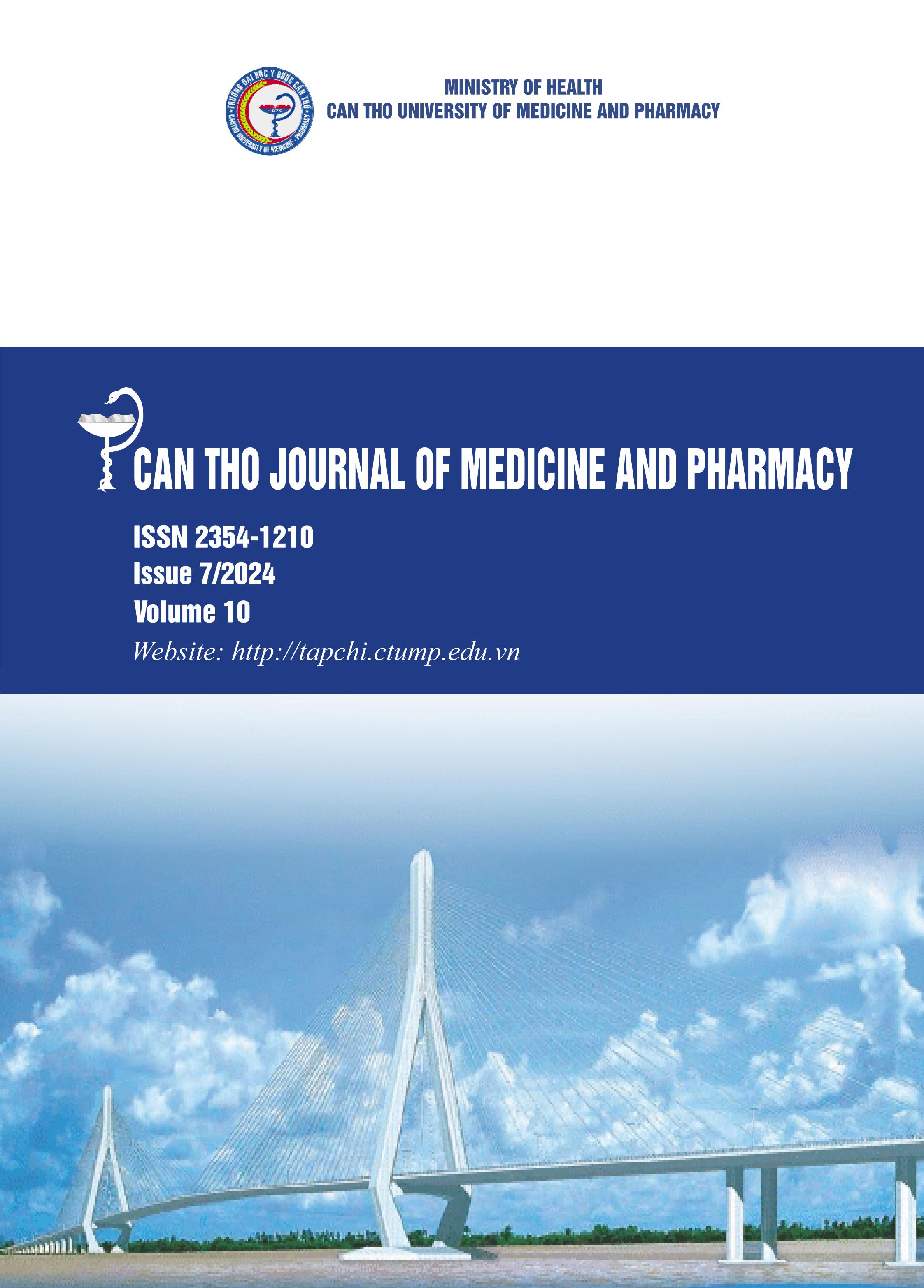RESEARCH ON THE FORMULATION OF NANOPARTICLES CONTAINING MANGIFERIN USING SELF-ASSEMBLY METHOD
Main Article Content
Abstract
Background: The use of natural-origin active compounds in disease treatment is currently a prevailing trend. Mangiferin, a major component found in mangoes, is present in relatively high proportions. However, mangiferin's disadvantages include low solubility and poor permeability. There are numerous methods available to improve solubility and permeability, among which selfassembly is noteworthy. Self-assembly involves the combination of certain molecules or macromolecules to form three-dimensional networks or other structures with new characteristics, phospholipids and chitosan are often used as raw materials for the self-assembly process to create nanoparticles. This method offers advantages such as high efficiency, simple implementation, short execution time, high retention efficiency, and increased permeability through biological membranes. Objectives: To develop a formulation and process for producing nano mangiferin using the selfassembly method with phosphatidylcholine and chitosan. Materials and methods: The solubility of mangiferin in high-proof ethanol was investigated, followed by an assessment of the influence of formulation factors and processes on the characteristics of nano-sized mangiferin particles. Results: The average solubility of mangiferin in 96% ethanol was approximately 0.5529±0.0003 mg/mL. The mole ratio of mangiferin to Lipoid S100 was 1:1, and the mass ratio of Lipoid S100 to chitosan was 20:1. A stirring speed of 1.000 revolutions per minute, reflux temperature of 70°C, reflux time of 2 hours. homogenization speed of 1,000 revolutions per minute, and homogenization time of 15 minutes produced the smallest nanoparticles (103.44±0.46 nm), with a low polydispersity index (0.281±0.009≤ 0.3) and zeta potential (31.95±0.08 mV ≥ +30 mV), encapsulation efficiency of 82.42±0.53%; loading capacity of 32.97±0.95%. Conclusions: A successful formulation of nanosized mangiferin particles was achieved using the self-assembly method, resulting in particles that meet the criteria of small size, uniformity, and durability. Moreover, nearly 100% mangiferin release was achieved after 60 minutes, indicating the promising potential for developing highly bioavailable oral formulations.
Article Details
Keywords
self-assembly, mangiferin, Lipoid S100, chitosan
References
2. Alkholifi FK, Alam A, Foudah AI, Yusufoglu HS. Phospholipid-Based Topical Nano-Hydrogel of Mangiferin: Enhanced Topical Delivery and Improved Dermatokinetics. Gels. 2023. 9(3), 178, https://doi.org/10.3390/gels9030178.
3. Ma H., Chen H., Sun L., Tong L., Zhang T. Improving permeability and oral absorption of mangiferin by phospholipid complexation. Fitoterapia. 2014. 93, 54-61, https://doi.org/10.1016/j.fitote.2013.10.016.
4. Khurana RK, Gaspar BL, Welsby G, Katare OP, Singh KK, Singh B. Improving the biopharmaceutical attributes of mangiferin using vitamin E-TPGS co-loaded self-assembled phosholipidic nano-mixed micellar systems. Drug Deliv Transl Res. 2018. 8(3), 617-632, https://doi.org/10.1007/s13346-018-0498-4.
5. Le Dinh Nguyen. Nguyen Duc Hanh. Do Quang Duong. Research on causal relationship and optimization of lipid-based nanoformulation containing mangiferin. Journal of Pharmacy. 2018, 58(5), 44-49.
6. Le Dinh Nguyen. Research on the preparation of In Situ gel nano lipid containing mangiferin. Master's Thesis. University of Medicine and Pharmacy. Ho Chi Minh City. 2019.
7. Nguyen Truong Giang. Nguyen Trong Dan. Le Thi Binh. Study on the transformation of mangiferin into water-soluble calcium mangiferin. Journal of Tropical Science and Technology. 2018, 15(6), 83-89.
8.Gowda N., Kumar P., Panghal S., and Rajshree M. ICH guidance in practice: validated reversedphase HPLC method for the determination of active mangiferin from extracts of Mangifera indica
Linn. Journal of chromatographic science. 2010, 48(2), 156–160, https://doi.org/10.1093/chromsci/48.2.156.
9. Jhoany A., Iliana S., Suslebys S., Lauro N., Aylema R., et al. Determination of mangiferin solubility in solvents used in the biopharmaceutical industry. Journal of pharmacy and pharmacognosy research. 2016, 4(2), 49-53, https://doi.org/10.56499/jppres15.099_4.2.49.
10. Ma Q., Gao Y., Sun W., et al. Self-Assembled chitosan/phospholipid nanoparticles: from fundamentals to preparation for advanced drug delivery. Drug Delivery. 2020. 27(1), 200-215, https://doi.org/10.1080/10717544.2020.1716878.
11. Dai L., Sun C., Wang D., Gao Y. The Interaction between Zein and Lecithin in Ethanol-Water Solution and Characterization of Zein-Lecithin Composite Colloidal Nanoparticles. PLoS One. 2016. 11(11), 1-20, https://doi.org/10.1371/journal.pone.0167172.
12. Khan M. M., Madni A., Torchilin V., Filipczak N., Pan J., et al. Lipid-chitosan hybrid nanoparticles for controlled delivery of cisplatin. Drug delivery. 2019. 26(1), 765–772, https://doi.org/10.1080/10717544.2019.1642420.


